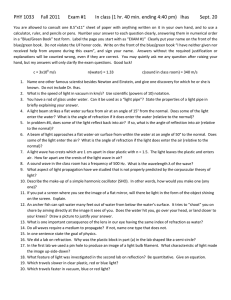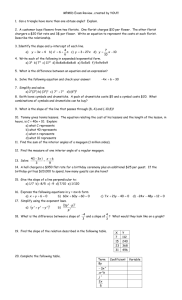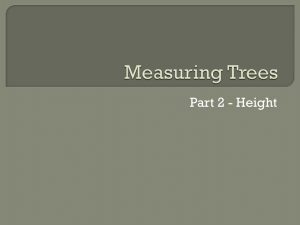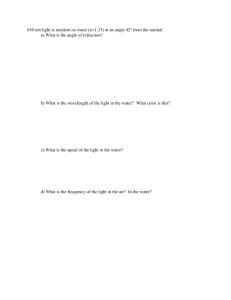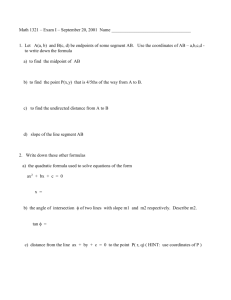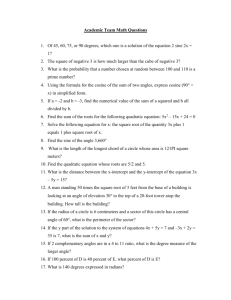Student Generated Linear Data
advertisement
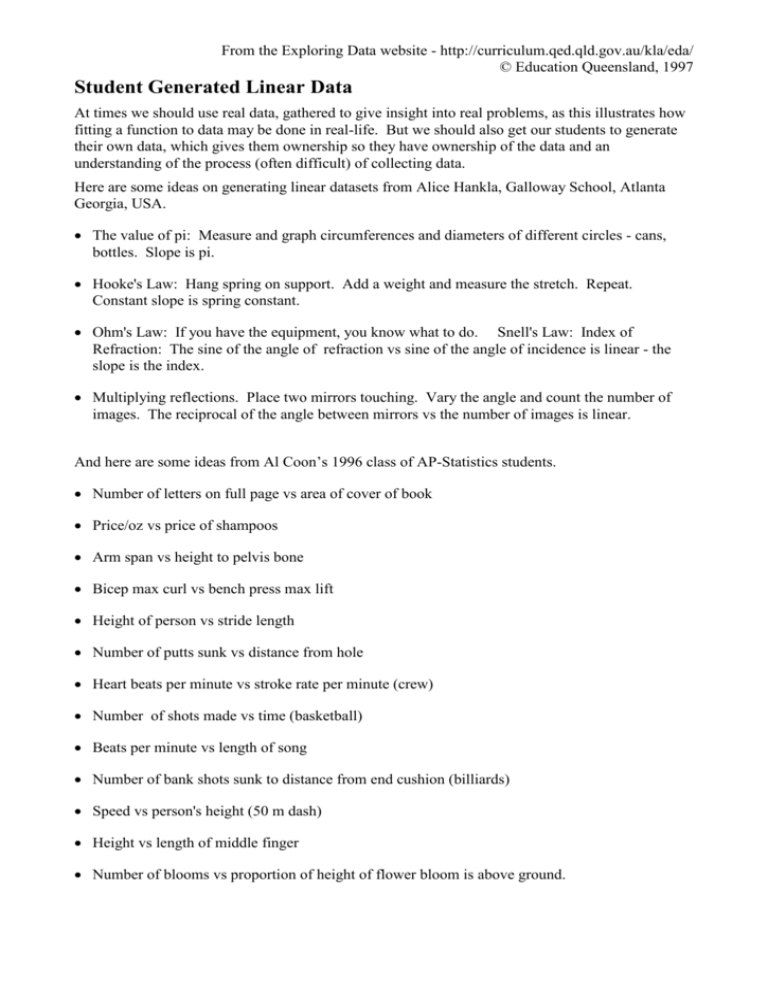
From the Exploring Data website - http://curriculum.qed.qld.gov.au/kla/eda/ © Education Queensland, 1997 Student Generated Linear Data At times we should use real data, gathered to give insight into real problems, as this illustrates how fitting a function to data may be done in real-life. But we should also get our students to generate their own data, which gives them ownership so they have ownership of the data and an understanding of the process (often difficult) of collecting data. Here are some ideas on generating linear datasets from Alice Hankla, Galloway School, Atlanta Georgia, USA. The value of pi: Measure and graph circumferences and diameters of different circles - cans, bottles. Slope is pi. Hooke's Law: Hang spring on support. Add a weight and measure the stretch. Repeat. Constant slope is spring constant. Ohm's Law: If you have the equipment, you know what to do. Snell's Law: Index of Refraction: The sine of the angle of refraction vs sine of the angle of incidence is linear - the slope is the index. Multiplying reflections. Place two mirrors touching. Vary the angle and count the number of images. The reciprocal of the angle between mirrors vs the number of images is linear. And here are some ideas from Al Coon’s 1996 class of AP-Statistics students. Number of letters on full page vs area of cover of book Price/oz vs price of shampoos Arm span vs height to pelvis bone Bicep max curl vs bench press max lift Height of person vs stride length Number of putts sunk vs distance from hole Heart beats per minute vs stroke rate per minute (crew) Number of shots made vs time (basketball) Beats per minute vs length of song Number of bank shots sunk to distance from end cushion (billiards) Speed vs person's height (50 m dash) Height vs length of middle finger Number of blooms vs proportion of height of flower bloom is above ground.





